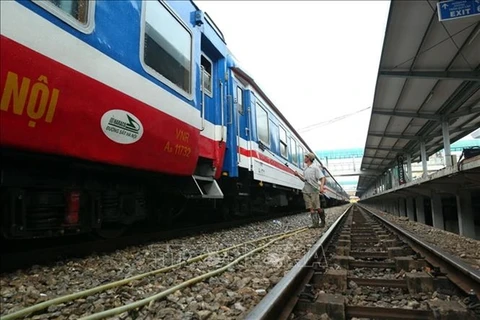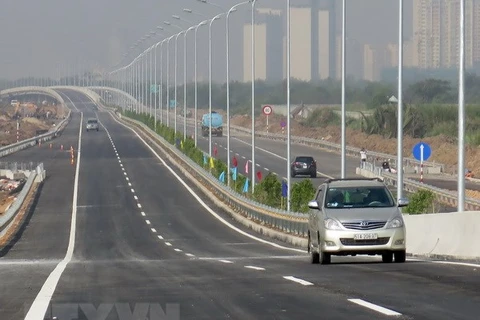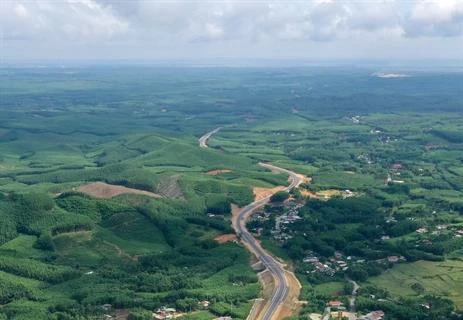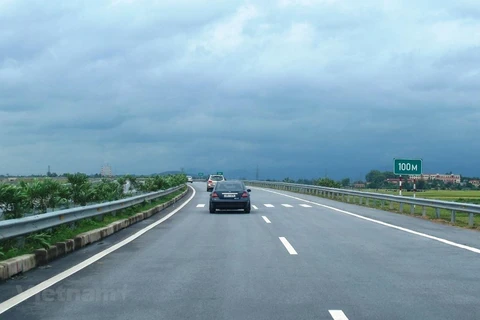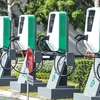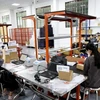
Hanoi (VNA) - The management boards of the North-South Expressway’s sub-projects have received applications from 32 domestic investors and joint ventures.
There are eight public-private partnership (PPP) sub-projects seeking domestic investors. The list of investors has not been revealed.
A decision on the pre-qualification round is expected in February next year.
The Ministry of Transport has set criteria to mark potential investors with a maximum score of 100. Financial capacity accounts for 60 points, while 30 points will be awarded for experience and 10 points for planning.
Each project will select five investors to bid.
According to Minister of Transport Nguyen Van The, it would take 30 days to evaluate the pre-qualification applications and 40 days to approve them.
Bidding will start in April 2020, and will take 90 days to evaluate and about 50 days to approve.
The bidding could be completed by November next year, The said.
In July, the ministry announced they would cancel open international bidding for eight projects on the North-South Expressway, in favour of homegrown investors.
The number of foreign investors passing the pre-qualification stage was low, leading to a lack of competition, said the ministry.
The decision was made on the consensus reached after consulting relevant agencies, transport ministry said in an announcement sent to the media, adding that it would adjust pre-qualification bidding invitations to better suit open domestic bids for eight public-private-partnership (PPP) projects for the eastern section of the trans-Vietnam highway.
Cancelling international bidding for the North-South Expressway project will be an opportunity for local firms, according to Vice Chairman of Deo Ca Group Tran Van The.
He recommended the transport ministry pay due attention to criteria on experience and financial capacity of investors, as well as their project management capacity.
“If local firms set up joint ventures, they will be able to carry out the trans-Vietnam expressway project with good quality and scheduled progress. The Government should outline drastic measures, asking commercial banks to engage in the project. If necessary, the Government should pump money into the banks so that they will have sufficient capital for the project”, The said.
Chairman and CEO of Phuong Thanh Transport Construction and Investment Joint Stock Company Pham Van Khoi said his company is establishing a joint venture with an investor to join the project; however, credit is still a big challenge.
Admitting that the investors will find it difficult to ask for bank loans for the expressway, Dong said that the transport ministry has already reported the issue to the Government, hoping that rational measures will be penned to remove bottlenecks for the project.
“The credit amount depends on existing regulations, while the feasibility of the project needs to be studied carefully. In case there is no investor, the transport ministry will recommend the National Assembly’s Standing Committee move to public investment”, Dong stressed.
The North-South Expressway has a total length of more than 2,100km, traversing 32 provinces and cities. The project is divided into three phases.
During 2017-2020, more than 650km of the road running through 13 provinces and cities will be built.
From 2021-2025, the sections of Bai Vot (Ha Tinh province)-Cam Lo (Quang Tri province) and Quang Ngai province-Nha Trang (Khanh Hoa province) will be constructed. Meanwhile, the section from La Son (Thua Thien-Hue province) to Tuy Loan (Da Nang city) will be upgraded from two lanes to four lanes.
The section from Can Tho city to Ca Mau city of southernmost Ca Mau province will be built and put into operation after 2025.
Total investment for the project during 2017-2020 is 118.7 trillion VND (nearly 5.1 billion USD), including 55 trillion VND (2.35 billion USD) from the Government and the remainder raised from investors through the public-private partnership model./.
